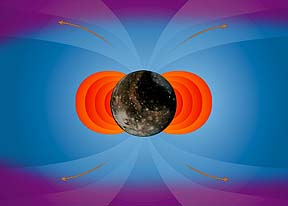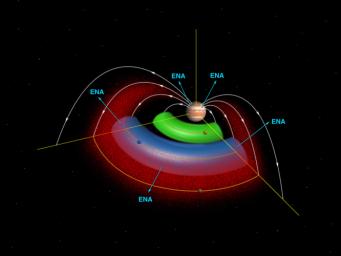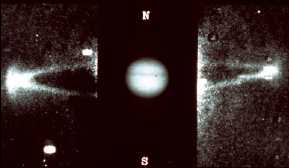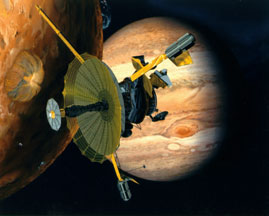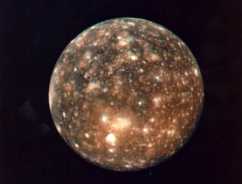Ganymede's Atmosphere
The Galileo mission discovered that Ganymede not only has a magnetosphere, but a thin atmosphere as well. It is created when molecules from the magnetosphere, moving very fast, hit the surface and knock out a water molecule. This process is known as ‘sputtering’. Water molecules loosed from the surface are quickly separated into the constituents Oxygen and Hydrogen. These molecules are also quickly ionized by ultraviolet radiation and charged particles in the vicinity. . The surface may also evaporate, or ‘sublimate’ when the sun is shining, the way the surface of a comet does. Because there is a magnetosphere, the charged particles in the atmosphere of Ganymede are not transported out of the environment the way they are at Europa.One of the instruments on the spacecraft measured a stream of hydrogen molecules flowing away from the moon over its north pole. Another instrument measured the presence of an Ionosphere, a part of the atmosphere that is filled with ions. If lightweight hydrogen escapes easily from Ganymede’s low gravity, it must be replenished continuously due to an active process at the surface. Terrestrial observations, such as this image of ozone from the Hubble Space Telescope have suggested that Ganymede may have a substantial trapped component of oxygen under the surface. Ozone is an important constituent of the Earth’s atmosphere. Calculations show that the trapped atmospheric component may be as large as the atmosphere of Mars. Ground based telescopes show other components of the atmosphere.
Even though Ganymede and Callisto have thin atmospheres, there does not seem to be a Ganymede or Callisto torus, the way there is at Europa and Io.






